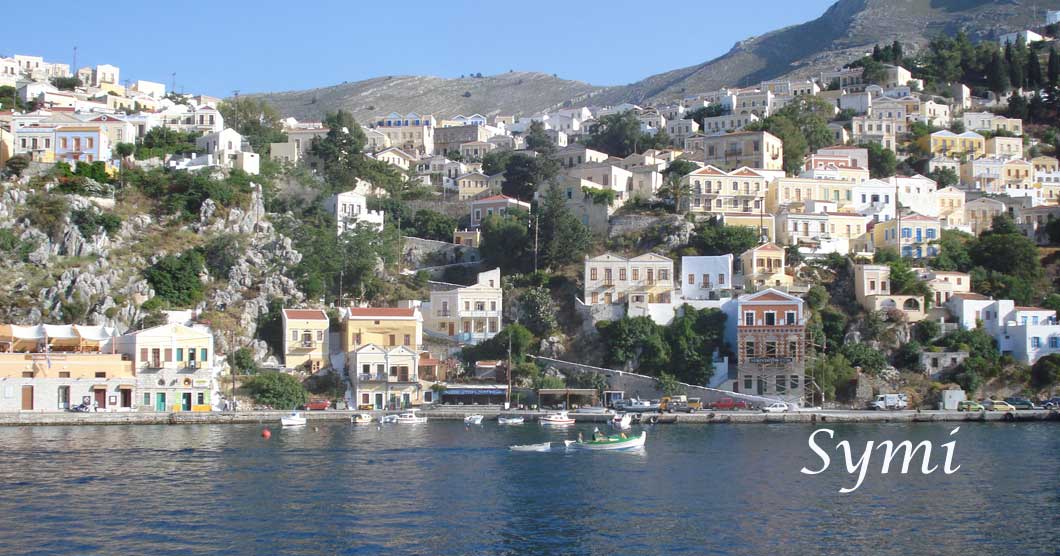What to do and see in Symi island
Start by exploring the spectacular port town of Gialos which must surely rank as one of the most beautiful harbours in the whole of Greece.
The town is on the western side of the deep u-shaped harbour, its wonderful array of pastel coloured neoclassical mansions arranged on the hillside are a poignant reminder of a bygone age when Symi was one of the most prosperous of the Greek islands.
Many of the mansions are derelict behind their imposing facades but others are being renovated to provide delightful holiday accommodation with an old world elegance sadly lacking in some of the bigger, brasher resort areas of Greece.
The town’s architecture is protected by law and modern construction is strictly limited so Gialos has mercifully managed to escape the ravages of mass tourism. You don’t have to look far to find evidence of the two major trades which once brought the island great wealth and prestige – ship building and sponge diving.
The Maritime Museum, in a neoclassical building at the back of the Town Square, charts the rise and fall of the island’s sponge trade and its shipbuilding industry which in its heyday saw 500 ships a year produced by Symi craftsmen.
Symi has been an important boat building centre since the days of the Peloponnesian Wars in the 5th century BC. Its glory days ended with the decline of the shipbuilding industry but you can still see boats being built and repaired at Nos at the north western end of the harbour. You can buy sponges as souvenirs at plenty of shops in Gialos
Diving for sponges was once such an important occupation on the island that local men were refused permission to marry unless they were accomplished sponge collectors .
At Restaurant Les Catherinettes on the waterfront you can see a plaque which marks the spot where the Germans surrendered the Dodecanese Islands to the Allies on May 8th, 1945. Until that point Symi has been occupied by the Italians since 1912.
If you’re interested in the island’s history make your way up to ancient capital of Horio on the hillside above Gialos via the 500 steps known as Kali Strata. Here you’ll find the Archaeological Museum which houses some Hellenisitic and Roman sculptures along with more recent religious icons, traditional costumes and various folkloric items giving a flavour of island life through the ages.
When it comes to exploring the rest of the island – its forested interior plateau and beautiful bays accessible only on foot or by boat – you’d be well advised to invest in a copy of Lance Chilton’s excellent “Walks on Symi” guide, available at the Symi Visitor office which produces the island’s English language newspaper.
The Castle of Symi located in Upper Symi ( Chorio ) and is one of the essential sight to see if you want to explore the history of the island. Another monument is the tomp of Pontikokastro, a prehistoric building also in upper Symi.
Symi’s star attraction is the Taxiarxis Micael Panormitis monastery at the southern end of the island, famous for its icon of the Archangel Michael.
The icon, like so many in Greece, is supposed to have miraculous powers which explains the 18th century monastery’s impressive display of votive offerings from pilgrims who have sought the help of the island’s patron saint.
To the west of the monastery you can see a memorial to a former abbot, two monks and two teachers who were executed by the Nazis in 1944 for running a spy radio for the British.
Visit the monastery of Panormintis
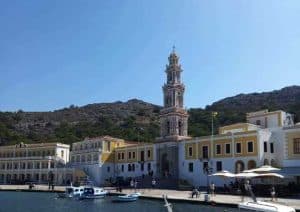
The monastery attracts thousands of pilgrims from all over Greece and of course from the neighboring islands who come to fulfill some wish. The name Panormitis, after all, is one of the common names in the Dodecanese.
The monastery has guesthouses where up to 500 people can be accommodated, while the baroque bell tower is of particular interest. In the monastery there is also a folklore and ecclesiastical museum.
Visit Archaeological Museum of Symi
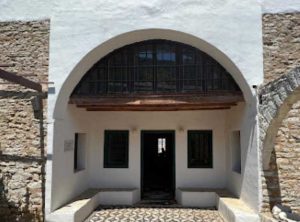
At the entrance of the mansion there is a pebbled courtyard of exceptional art and the collections cover finds from the Hellenistic, Roman and Byzantine periods.
At the same time, folklore exhibits from past years with traditional costumes and objects from the daily life of the island’s inhabitants are also shown.
Walk the Kali Strata
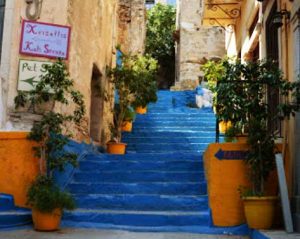
The best time to go up to the Village is in the afternoon, an hour before sunset. After all, to climb the 500 steps it will need to be cool.
The climb is tiring because the steps are quite long and therefore you will need to take some breaks in between.
But what about those who go up and down every day to go home? On the way you will see many of the old mansions and you will have a nice view of the port.
The Castle of Symi
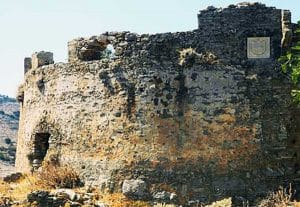
From the 17th century onwards, the expansion of the country towards the sea began gradually. From up there you will enjoy unique views to all sides of Symi.
The castle of Ano Symi is dominated by the large white church of Megali Panagia or Panagia tou Kastro with the panoramic view. The church was renamed Megali Panagia after the liberation due to the bombing by the Germans.
Pontikokastro
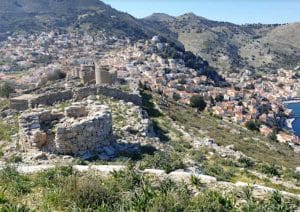
Various theories talk about a mound or a burial monument, but the archaeological and scientific research has not yet been completed. So, so far, there is no exact view of what exactly it is.
The locals call it the “tomb of Nereus” but archaeologists have not yet been able to determine its age. It is accessed by walking up the five hundred steps of Kali Strata that connects Gialos to Chorio.
There is a possibility that it is a mound or burial monument, but as we said, it has not yet been precisely dated because archaeological and scientific research must precede it.
You can also go with your car. But keep in mind that you should leave it on the outskirts of the settlement, near its highest point.
